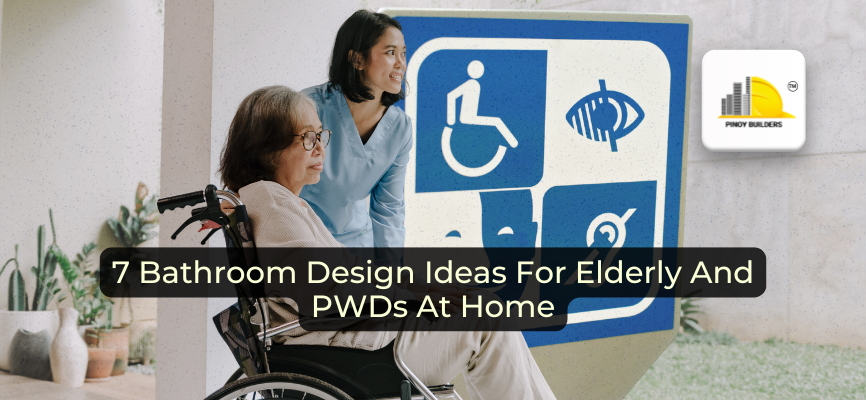In the Philippines, caring for our elderly and the disabled is deeply embedded in our culture. As our loved ones age or face mobility challenges, we must consider changing our living spaces to adapt to our evolving needs. One area often overlooked is the bathroom, where safety and accessibility are crucial.
Bathroom designs typically have a lifespan of 7 to 10 years, and it’s essential to recognize when a remodel may be necessary. Whether due to aging, physical disabilities, or simply the desire for a safer environment, rethinking your bathroom design can make a significant difference in comfort and independence for elderly individuals and persons with disabilities (PWDs).
In this article, we’ll explore seven innovative bathroom design ideas that cater specifically to the needs of these individuals. From flooring choices to lighting, these recommendations aim to create safe, accessible, and comfortable spaces that empower users to maintain their independence while ensuring their well-being.
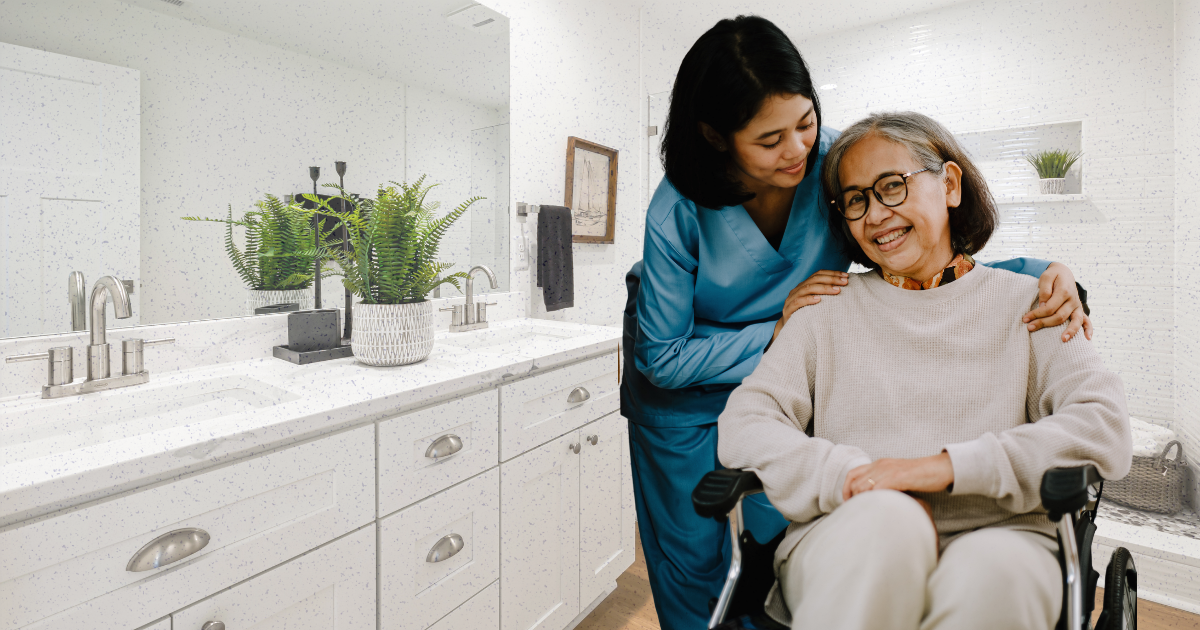
7 Bathroom Design Ideas for elderly and PWDs at home
Design Idea #1: Non-slip Flooring
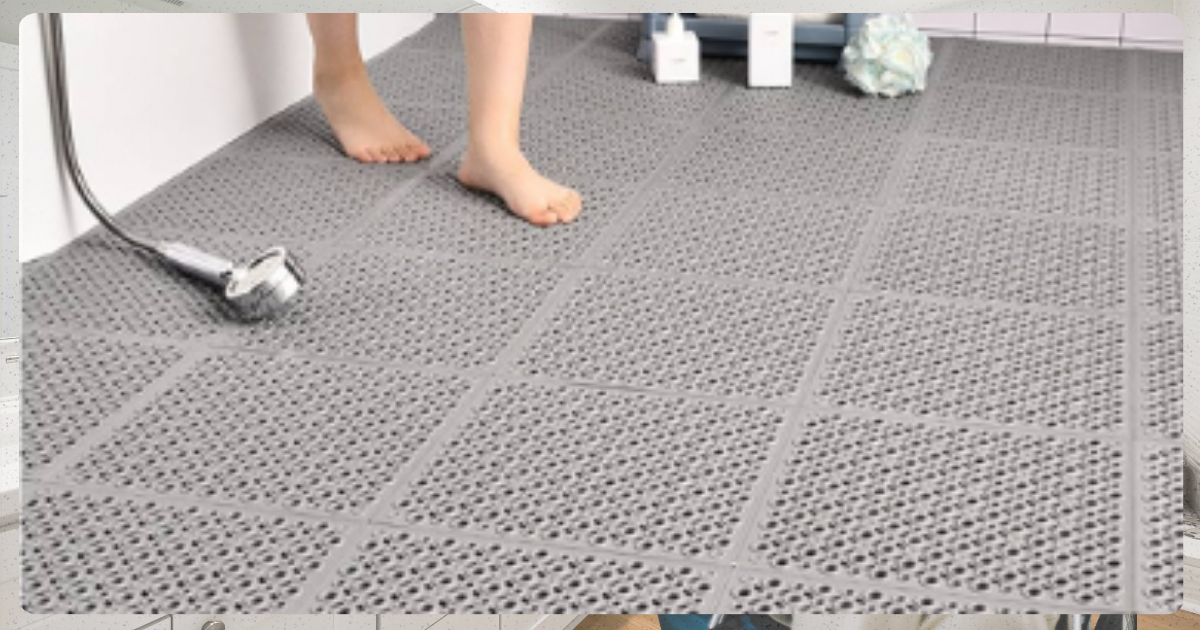
Safety begins underfoot, and choosing the right flooring is crucial. Non-slip materials can significantly reduce the risk of falls, a common concern in bathrooms. Opting for textured vinyl, rubber, or other non-slip tiles can create a safer environment. These materials not only provide grip but are also easy to clean, ensuring that your bathroom remains both functional and hygienic.
Design Idea #2: Walk-in Bathtubs
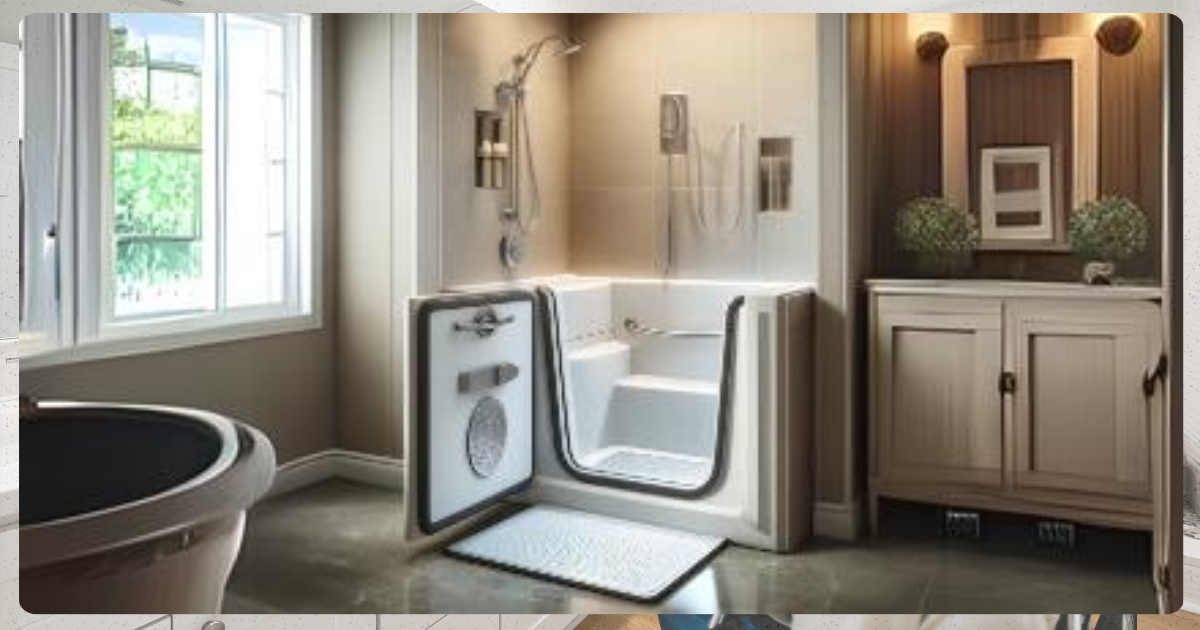
Image from Guilin Cabinet
Walk-in bathtubs offer a safer solution for those who find traditional bathtubs challenging to navigate. With low thresholds, built-in seating, and safety features like grab bars, these tubs provide a safe and comfortable bathing experience. This type of bathtub promotes independence and safety for users.
Design Idea #3: Grab Bars and Handrails
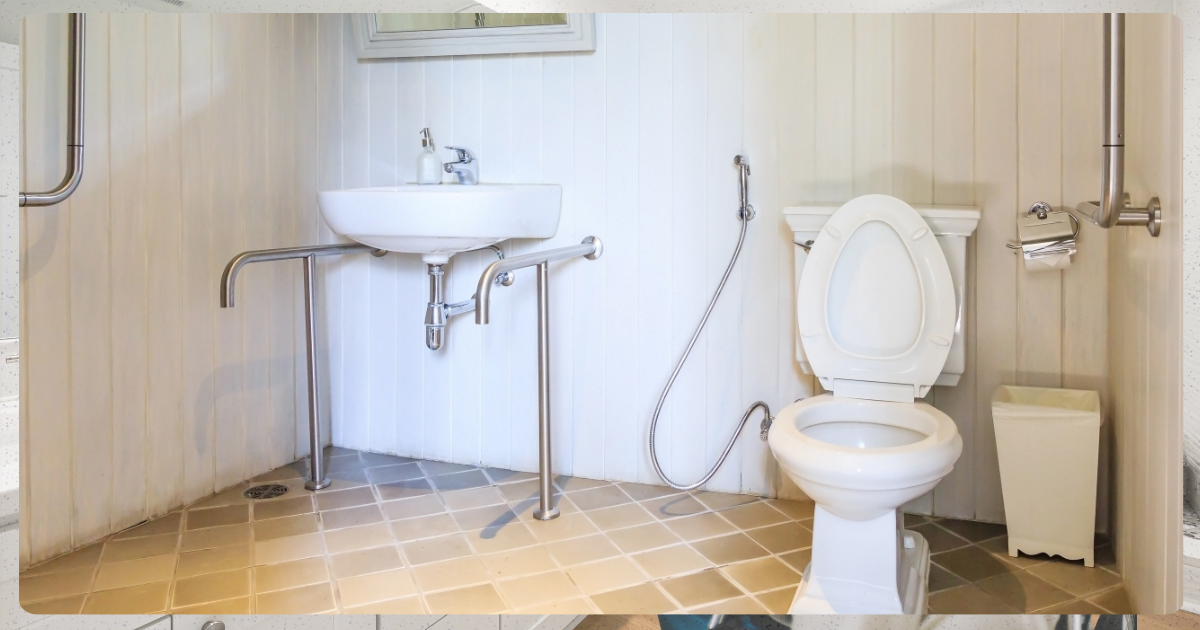
Incorporating grab bars and handrails is a straightforward way to enhance safety in the bathroom. Place these essential fixtures strategically near the toilet, shower, and bathtub to provide support when needed. Stainless steel or grab bars in decorative finishes can add a stylish touch while offering the stability users require. This thoughtful addition helps increase confidence and mobility for those using the space.
Design Idea #4: Adjustable Shower Heads
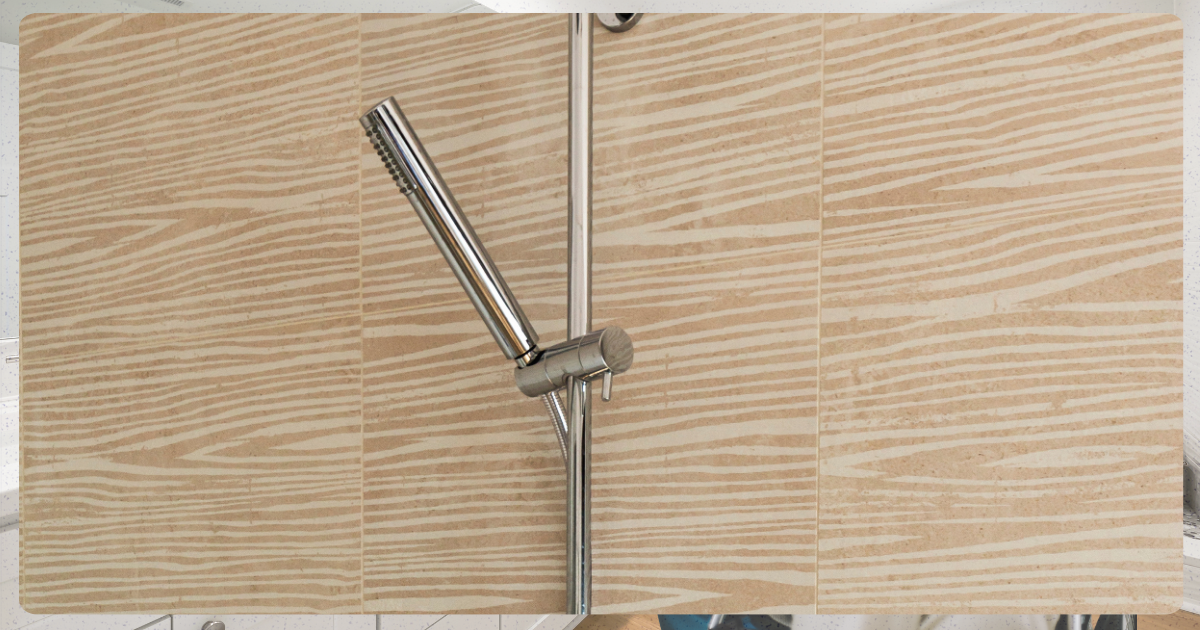
Individuals who prefer seated or standing showers can greatly benefit from adjustable or handheld shower heads. Look for models that feature easy-to-use controls and ergonomic designs, allowing for flexibility and comfort. Brands like Moen and Delta offer options that cater to various user preferences, promoting independence and making bathing a more enjoyable experience.
Design Idea #5: Raised Toilets

Higher toilets can significantly benefit individuals with mobility issues, making it easier to sit down and stand up. When selecting a raised toilet, consider models with a height of 17 to 19 inches, which can enhance comfort and usability. Brands such as Kohler and American Standard offer specialized models designed with these features, ensuring that users can navigate their bathroom experience with ease.
Design Idea #6: Clear Space and Accessibility
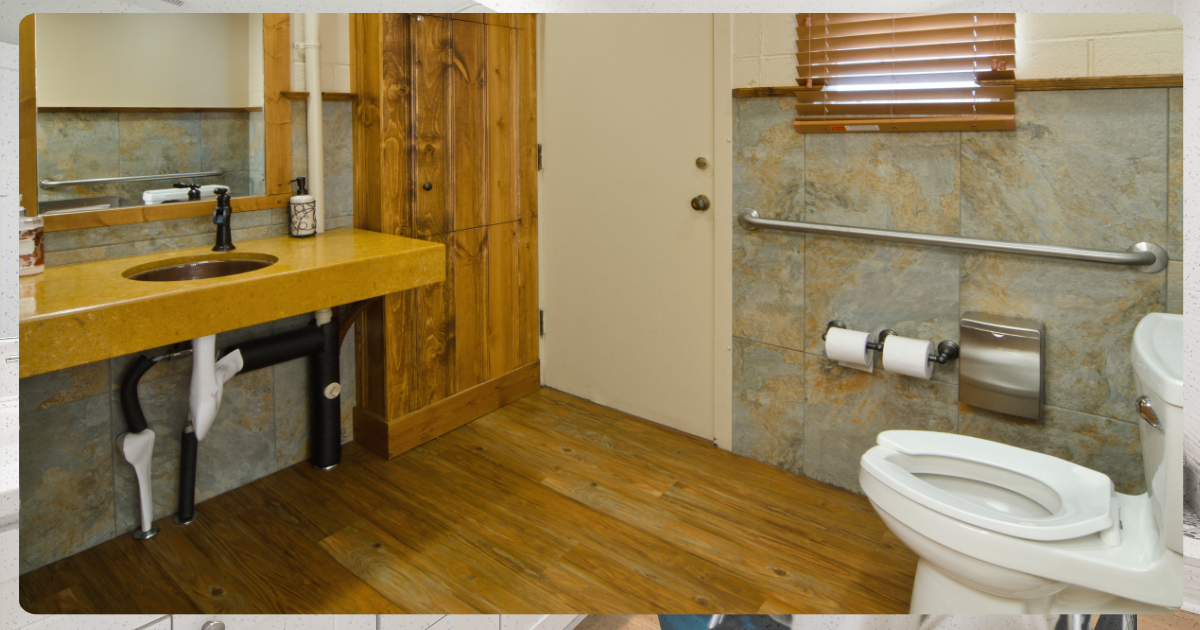
Creating an accessible bathroom means ensuring ample space for maneuverability, especially for those using wheelchairs or walkers. Clear pathways and minimal obstacles are essential for fostering independence and reducing the risk of accidents. A thoughtful design layout, which may include open spaces and strategically placed fixtures, can greatly enhance the bathroom’s functionality.
Design Idea #7: Lighting and Color Schemes
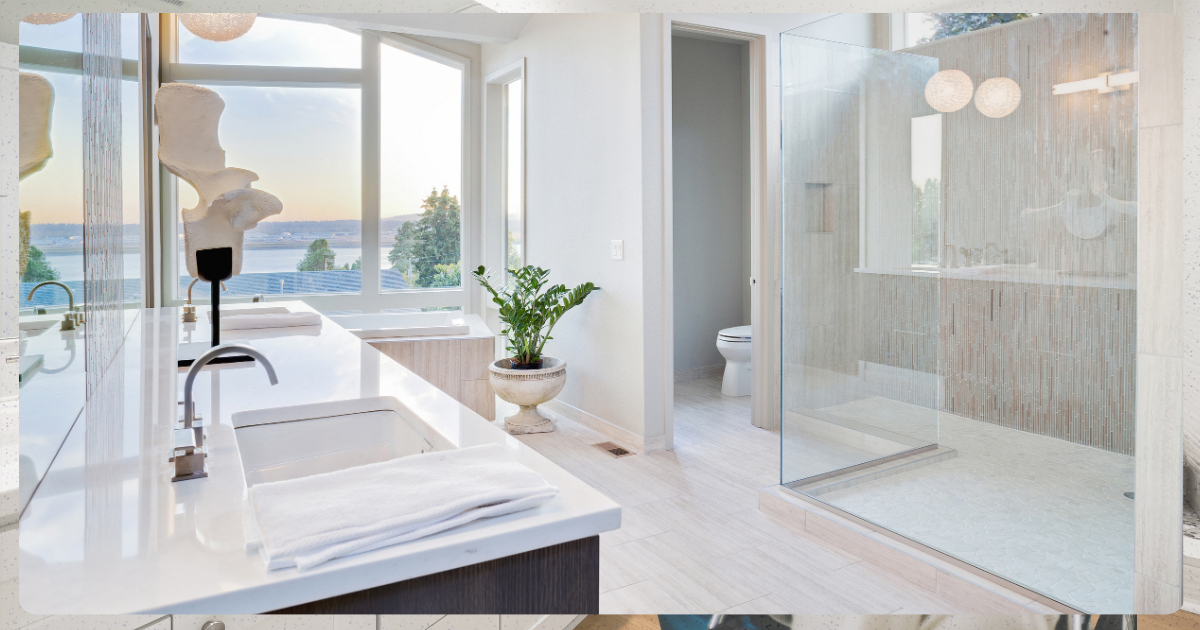
Effective lighting can dramatically improve visibility and safety in the bathroom. Choose lighting options that are bright and adjustable to meet individual needs. Additionally, high-contrast color schemes should be considered to help users navigate the space more easily. Installing motion-sensor lights can also enhance safety by providing illumination when needed, which reduces the likelihood of accidents.
A Safer Comfort Room for Everyone
Redesigning a bathroom to accommodate the needs of elderly individuals and PWDs is not just about aesthetics; it’s about creating a safe, comfortable, and accessible environment. By considering these seven design ideas—from non-slip flooring to effective lighting—you can enhance safety, comfort, and independence for yourself or your loved ones.
As you plan your bathroom remodel, take these suggestions into account to ensure that the space meets the needs of all its users.
References:
Active Mobility. (n.d.). Your #1 Disability-friendly Bathroom Plan For Ease Of Use At Hom. Active Mobility. https://www.activemobility.com.au/blog/disabled-bathroom-designs?srsltid=AfmBOoqb0n9W1LOyTrQtUXMn7_hIrgE0rekxatgzbEtndu08Vk6wjkvA
Architectural Digest. (2023, May 5). 47 Bathroom Remodel Ideas to Inspire Your Next Renovation. Architectural Digest. Retrieved October 15, 2024, from https://www.architecturaldigest.com/gallery/inspiring-bathrooms-archives-slideshow


